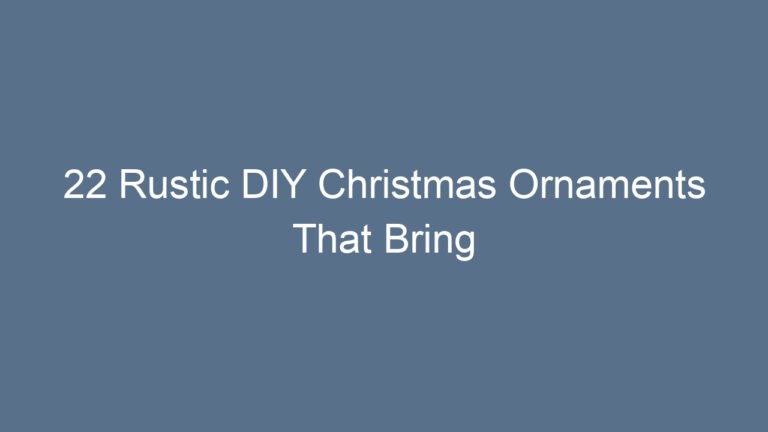25 Fluted Cabinet Door Ideas That Add Texture and Style to Any Home

If you’ve noticed that fluted cabinet doors seem to be popping up everywhere—from design magazines to your favorite home renovation shows—you’re not imagining it. This trend is quickly becoming a timeless classic because of how it blends texture, elegance, and functionality. The grooves, or flutes, create rhythm and depth on an otherwise plain surface. Think of them as the fashion pleats of your kitchen, bathroom, or living room cabinetry. When I first saw fluted designs in a small boutique café, I instantly felt how they transformed the vibe—warm, modern, and sophisticated all at once. What’s even better is that fluted doors adapt to almost any design style, whether you’re into minimalism, mid-century modern, or cozy farmhouse looks. In this article, we’ll explore 25 fluted cabinet door ideas that can inspire your next project. Each idea brings its own character, yet they all share that unmistakable textured charm.
In This Article
- 1 1. Classic Vertical Fluting for Timeless Kitchens
- 2 2. Horizontal Fluting for a Fresh Twist
- 3 3. Painted Fluted Doors in Bold Colors
- 4 4. White Fluted Cabinets for Minimalist Homes
- 5 5. Half-Fluted Doors for Subtle Style
- 6 6. Glass and Fluting Combo
- 7 7. Curved Fluted Cabinet Doors
- 8 8. Fluted Kitchen Islands as the Focal Point
- 9 9. Dark Wood Fluted Doors for Drama
- 10 10. Two-Tone Fluted Designs
- 11 11. Slim Fluting for a Delicate Look
- 12 12. Deep Fluting for Bold Texture
- 13 13. Fluted Sliding Doors for Small Spaces
- 14 14. Fluted Pantry Doors
- 15 15. Fluted Bathroom Vanity Doors
- 16 16. Painted Pastels on Fluted Doors
- 17 17. Fluted Glass Doors
- 18 18. Fluted Metal Cabinet Doors
- 19 19. Fluted Cabinet Doors with Integrated Handles
- 20 20. Floor-to-Ceiling Fluted Storage Walls
- 21 21. Natural Oak Fluted Doors
- 22 22. Painted Black Fluted Doors for Contrast
- 23 23. Fluted Wardrobe Doors in Bedrooms
- 24 24. Mixed Material Fluted Doors
- 25 25. Painted Neutral Fluted Doors for Versatility
- 26 Closing Thoughts
1. Classic Vertical Fluting for Timeless Kitchens
The most traditional way to use fluted cabinet doors is with vertical grooves running the full height of each door. This design instantly makes a plain cabinet look tailored and intentional. It’s similar to how vertical stripes on clothing elongate the body—they give your cabinetry a sense of height and structure. In my cousin’s kitchen, vertical fluted doors made their compact space feel taller, almost like the walls were stretching upward. These doors also pair beautifully with both brass and matte black hardware, giving you flexibility to shift the mood. If you want a safe yet stylish option, start here.
2. Horizontal Fluting for a Fresh Twist
Most people expect fluting to run vertically, but what if you flipped the direction? Horizontal fluted cabinet doors bring a fresh, unexpected look that feels modern and creative. They work especially well on wide drawers or long sideboards where the horizontal lines emphasize width. A friend of mine used this design in her dining room buffet, and it turned the piece into a conversation starter. Guests often commented on how unique the texture looked compared to standard cabinetry. It’s proof that small details can dramatically shift how furniture feels.
3. Painted Fluted Doors in Bold Colors
While natural wood grain is beautiful, painting fluted cabinet doors in bold shades takes them to another level. Think navy blue, deep forest green, or even mustard yellow. The paint catches in the grooves, casting subtle shadows that add depth. In my own kitchen, I tried painting the fluted doors a calming sage green, and every morning it feels like a little dose of nature indoors. If you’re hesitant about strong colors, start with a small area like a bathroom vanity before committing to a whole kitchen.
4. White Fluted Cabinets for Minimalist Homes
White-on-white interiors can feel cold if they lack texture. That’s where white fluted cabinet doors shine. They keep the minimalist aesthetic intact but add warmth and visual interest. The grooves create tiny shadows that make the cabinets stand out without overwhelming the space. I once stayed at an Airbnb in Copenhagen where the entire kitchen was white, but the fluted doors made it feel inviting rather than clinical. Sometimes the smallest textural change prevents a room from feeling flat.
5. Half-Fluted Doors for Subtle Style
Not every door has to be fully fluted. Half-fluted cabinet doors—where the bottom half is fluted and the top half is smooth—strike a nice balance between boldness and subtlety. It’s like wearing a patterned skirt with a plain top; the mix feels harmonious. A designer friend recommended this for a client who wanted texture but worried about it being too much. The result? A modern yet approachable kitchen design that still felt light and airy.
6. Glass and Fluting Combo
One of the chicest designs I’ve seen is combining glass panels with fluted detailing. Imagine a cabinet door with a clear glass top and fluted wood base. It creates contrast while also showing off your curated dishes or glassware. A neighbor of mine used this style in her bar cabinet, and guests often admire how sophisticated it looks when paired with soft lighting. It’s perfect for blending display and storage in one piece.
7. Curved Fluted Cabinet Doors
Curves are making a comeback in furniture design, and pairing them with fluting makes a striking statement. Curved fluted cabinet doors soften sharp kitchen lines while keeping that textured elegance. Think of an arched pantry or rounded island with fluted panels—it’s instantly Instagram-worthy. I saw this in a boutique salon recently, and it gave the space such a graceful, calming atmosphere. The grooves seem to flow with the curve, almost like ripples on water.
8. Fluted Kitchen Islands as the Focal Point
If you’re nervous about committing to fluted doors across your whole kitchen, try using them on your island instead. A fluted kitchen island can act like a centerpiece, grounding the space while adding a stylish accent. I once helped a friend redesign her kitchen, and she only fluted the island’s cabinets. The result? Every visitor’s eyes went straight to the island—it became the star of the room.
9. Dark Wood Fluted Doors for Drama
While light tones feel airy, dark fluted cabinet doors create a dramatic, moody atmosphere. Picture rich walnut or ebony finishes with grooves catching subtle highlights. In a loft apartment I toured, these doors added depth and luxury to what was otherwise an industrial space with concrete walls. Dark fluting pairs beautifully with metallic accents like brass handles or even brushed nickel, creating a refined and bold effect.
10. Two-Tone Fluted Designs
Sometimes the magic happens in contrast. Two-tone fluted cabinet doors—like white uppers with natural wood lowers—create dimension and keep the kitchen from feeling one-note. A family friend used this in their Scandinavian-inspired home, and it perfectly balanced warmth and freshness. The fluted lower cabinets became a grounding feature, while the smooth upper cabinets kept things airy.
11. Slim Fluting for a Delicate Look
Not all flutes need to be deep or wide. Slim, fine grooves create a softer, more delicate appearance that works beautifully in modern or minimalist homes. They almost look like fabric pleats. In my aunt’s bathroom remodel, slim-fluted vanity doors added just the right amount of detail without overwhelming the small space. This option is subtle yet stylish.
12. Deep Fluting for Bold Texture
On the flip side, deeper fluting adds drama and shadow, making the doors feel almost sculptural. These deep fluted cabinet doors catch the light in more pronounced ways, giving the surface a rich, tactile quality. I once ran my fingers across such doors in a showroom, and the texture alone made me smile. If you want cabinets that beg to be touched, this is the design to choose.
13. Fluted Sliding Doors for Small Spaces
Sliding doors save space in tight areas, and when you combine that with fluting, you get a functional and stylish solution. A tiny apartment kitchen I visited had fluted sliding cabinet doors, and it was brilliant. The grooves made the doors easy to grip without needing handles, and the sliding motion kept the narrow walkway uncluttered. It’s proof that design and practicality can go hand in hand.
14. Fluted Pantry Doors
Pantries often get overlooked in design, but giving them fluted doors can make them a highlight. In one farmhouse kitchen I toured, tall fluted pantry doors created a cozy yet stylish presence in the corner. The rhythm of the grooves gave the impression of a grand feature wall, even though it was just storage space. It’s a clever way to elevate something purely functional.
15. Fluted Bathroom Vanity Doors
Bathrooms deserve style too. Fluted vanity doors add charm and character, turning a small piece of furniture into a design feature. I installed fluted doors in my guest bathroom vanity, and the compliments haven’t stopped. Even though the space is tiny, the texture makes it feel designed rather than just functional. Pair it with a round mirror for extra softness.
16. Painted Pastels on Fluted Doors
If bold colors feel too strong, pastel-painted fluted doors strike a lovely balance. Imagine blush pink, powder blue, or mint green grooves adding charm to your kitchen or bathroom. A café I love has mint green fluted cabinets, and they always make me smile. The color softens the linear grooves, making the space feel playful yet stylish.
17. Fluted Glass Doors
Instead of fluting the wood, you can also choose fluted glass cabinet doors. These create a semi-obscured view of what’s inside, offering both privacy and intrigue. My friend’s kitchen has these on her upper cabinets, and they let light through while still hiding clutter. The effect is airy, modern, and a little mysterious.
18. Fluted Metal Cabinet Doors
Wood isn’t the only option. Metal fluted cabinet doors offer a sleek, industrial vibe. Aluminum or steel panels with vertical grooves create a modern edge that suits lofts or contemporary spaces. I saw this in a high-end restaurant’s open kitchen, and the metallic shine paired with warm lighting created an unforgettable effect. It’s bold and unexpected.
19. Fluted Cabinet Doors with Integrated Handles
Handles sometimes disrupt clean lines, but integrated grooves can double as pulls. This design merges function with form beautifully. I tested this in a showroom where the fluted grooves extended slightly deeper at the top, creating a grip point. It felt seamless, stylish, and practical—perfect for modern minimalists who love streamlined cabinetry.
20. Floor-to-Ceiling Fluted Storage Walls
Imagine a full wall of fluted cabinet doors, stretching from floor to ceiling. It’s dramatic and functional, especially for open living rooms that need hidden storage. I saw this in a modern apartment where the wall looked like an art installation rather than storage. The grooves created a sense of rhythm, almost like a sculpture, while hiding everything from coats to books.
21. Natural Oak Fluted Doors
Natural oak remains a favorite material because of its warm tones and durability. When fluted, it feels even richer. I visited a country home where the kitchen featured oak fluted cabinet doors, and the result was cozy yet refined. The texture highlighted the grain, making each door feel unique. Oak is a safe yet stunning choice if you love natural finishes.
22. Painted Black Fluted Doors for Contrast
Black cabinets can sometimes feel heavy, but with fluting, they take on elegance and lightness. The grooves break up the surface, adding dimension and preventing the doors from feeling flat. In a modern bachelor pad I visited, the black fluted cabinet doors were paired with white countertops for a high-contrast look that was both bold and chic.
23. Fluted Wardrobe Doors in Bedrooms
Cabinetry isn’t limited to kitchens and bathrooms. Fluted wardrobe doors bring style to bedrooms too. I once stayed in a boutique hotel where the wardrobe had soft beige fluted doors, and it felt more like furniture than plain storage. Every time I opened the closet, it felt like I was interacting with something designed, not just functional.
24. Mixed Material Fluted Doors
Mixing materials—like wood with rattan, glass, or metal—creates fluted cabinet doors that feel eclectic and custom. One client I knew had walnut fluting with woven rattan insets, and the result was a beautiful blend of natural textures. It gave the space character and felt one-of-a-kind. Mixing materials makes your cabinets feel personal rather than standard.
25. Painted Neutral Fluted Doors for Versatility
Finally, if you want longevity, go for neutral-painted fluted cabinet doors. Beige, taupe, or soft gray works across styles and doesn’t go out of fashion. My friend who flips houses swears by this because it appeals to almost every buyer. The grooves keep it interesting while the neutral tone keeps it timeless. It’s a safe, stylish bet that works anywhere.
Closing Thoughts
When it comes to adding texture, charm, and sophistication, fluted cabinet doors are unbeatable. Whether you lean toward bold colors, subtle neutrals, natural wood, or even glass, there’s a version that fits your style. These 25 ideas prove that fluting isn’t just a passing trend—it’s a versatile design element that works in every corner of the home. If you’ve been waiting for a sign to try fluted cabinetry, consider this your nudge. Sometimes, the smallest details—like grooves in a door—make the biggest difference in how a space feels.






